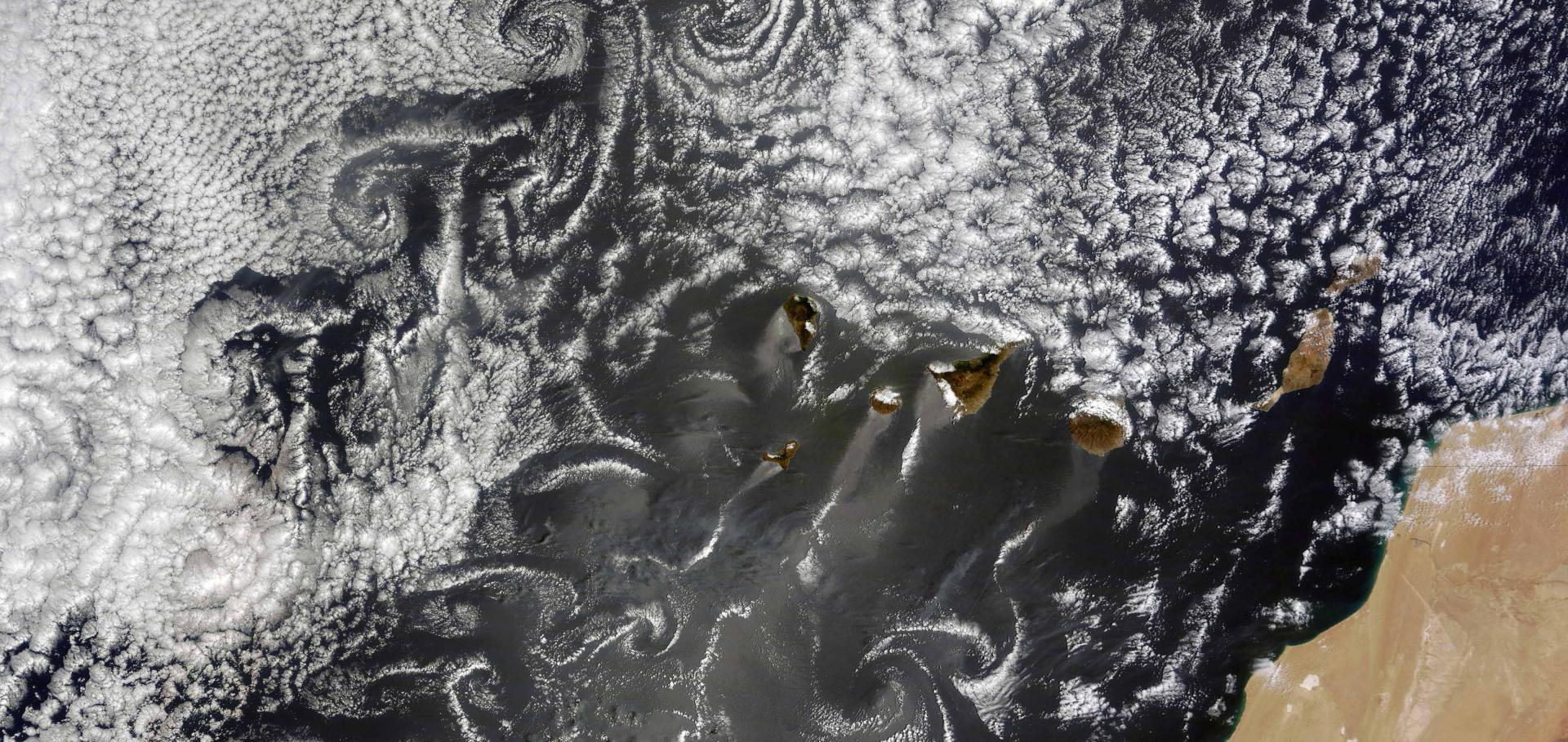A pathway analysis of global aerosol processes
Atmospheric Chemistry and Physics Discussions Copernicus Publications 14 (2014) 15045-15112
Abstract:
We present a detailed budget of the changes in atmospheric aerosol mass and numbers due to various processes: emission, nucleation, coagulation, H2SO4 condensation and in-cloud production, ageing and deposition. The budget is created from monthly-averaged tracer tendencies calculated by the global aerosol model ECHAM5.5-HAM2 and allows us to investigate process contributions at various length- and time-scales. As a result, we show in unprecedented detail what processes drive the evolution of aerosol. In particular, we show that the processes that affect aerosol masses are quite different from those affecting aerosol numbers. Condensation of H2SO4 gas onto pre-existing particles is an important process, dominating the growth of small particles in the nucleation mode to the Aitken mode and the ageing of hydrophobic matter. Together with in-cloud production of H2SO4, it significantly contributes to (and often dominates) the mass burden (and hence composition) of the hydrophilic Aitken and accumulation mode particles. Particle growth itself is the leading source of number densities in the hydrophilic Aitken and accumulation modes, with their hydrophobic counterparts contributing (even locally) relatively little. As expected, the coarse mode is dominated by primary emissions and mostly decoupled from the smaller modes. Our analysis also suggests that coagulation serves mainly as a loss process for number densities and that, relative to other processes, it is a rather unimportant contributor to composition changes of aerosol. The analysis is extended with sensitivity studies where the impact of a lower model resolution or pre-industrial emissions is shown to be small. We discuss the use of the current budget for model simplification, prioritisation of model improvements, identification of potential structural model errors and model evaluation against observations.Intercomparison and evaluation of global aerosol microphysical properties among AeroCom models of a range of complexity
Atmospheric Chemistry and Physics Copernicus Publications 14:9 (2014) 4679-4713
Links between satellite retrieved aerosol and precipitation
Atmos. Chem. Phys. Discuss. 14 (2014) 6821-6861
Abstract:
Many theories have been proposed detailing how aerosols might impact precipitation, predicting both increases and decreases depending on the prevailing meteorological conditions and aerosol type. In convective clouds, increased aerosol concentrations have been speculated to invigorate convective activity. Previous studies have shown large increases in precipitation with increasing aerosol optical depth, concluding an aerosol effect on precipitation. Our analysis reveals that these studies may have been influenced by cloud effects on the retrieved aerosol, as well as by meteorological covariations. We use a regime-based approach to separate out different cloud regimes, allowing the study of aerosol-cloud interactions in individual cloud regimes. We account for the influence of cloud properties on the aerosol retrieval and make use of the diurnal sampling of the TRMM satellite and the TRMM merged precipitation product to investigate the precipitation development. We find that whilst there is little effect on precipitation at the time of the aerosol retrieval, there is an increase in precipitation from cloud in high aerosol environments in the 6 h after the aerosol retrieval, consistent with the invigoration hypothesis. Increases in lightning flash count with increased aerosol are also observed in this period. The invigoration effect appears to be dependent on the cloud top temperature, with clouds with tops colder than 0 °C showing increases in precipitation at times after the retrieval as well as increases in wet scavenging. Warm clouds show little change in precipitation development with increasing aerosol, suggesting ice processes are important for the invigoration of precipitation.An AeroCom assessment of black carbon in Arctic snow and sea ice
ATMOSPHERIC CHEMISTRY AND PHYSICS Copernicus Publications 14:5 (2014) 2399-2417
Abstract:
Though many global aerosols models prognose surface deposition, only a few models have been used to directly simulate the radiative effect from black carbon (BC) deposition to snow and sea ice. Here, we apply aerosol deposition fields from 25 models contributing to two phases of the Aerosol Comparisons between Observations and Models (AeroCom) project to simulate and evaluate within-snow BC concentrations and radiative effect in the Arctic. We accomplish this by driving the offline land and sea ice components of the Community Earth System Model with different deposition fields and meteorological conditions from 2004 to 2009, during which an extensive field campaign of BC measurements in Arctic snow occurred. We find that models generally underestimate BC concentrations in snow in northern Russia and Norway, while overestimating BC amounts elsewhere in the Arctic. Although simulated BC distributions in snow are poorly correlated with measurements, mean values are reasonable. The multi-model mean (range) bias in BC concentrations, sampled over the same grid cells, snow depths, and months of measurements, are −4.4 (−13.2 to +10.7) ng g−1 for an earlier phase of AeroCom models (phase I), and +4.1 (−13.0 to +21.4) ng g−1 for a more recent phase of AeroCom models (phase II), compared to the observational mean of 19.2 ng g−1. Factors determining model BC concentrations in Arctic snow include Arctic BC emissions, transport of extra-Arctic aerosols, precipitation, deposition efficiency of aerosols within the Arctic, and meltwater removal of particles in snow. Sensitivity studies show that the model–measurement evaluation is only weakly affected by meltwater scavenging efficiency because most measurements were conducted in non-melting snow. The Arctic (60–90° N) atmospheric residence time for BC in phase II models ranges from 3.7 to 23.2 days, implying large inter-model variation in local BC deposition efficiency. Combined with the fact that most Arctic BC deposition originates from extra-Arctic emissions, these results suggest that aerosol removal processes are a leading source of variation in model performance. The multi-model mean (full range) of Arctic radiative effect from BC in snow is 0.15 (0.07–0.25) W m−2 and 0.18 (0.06–0.28) W m−2 in phase I and phase II models, respectively. After correcting for model biases relative to observed BC concentrations in different regions of the Arctic, we obtain a multi-model mean Arctic radiative effect of 0.17 W m−2 for the combined AeroCom ensembles. Finally, there is a high correlation between modeled BC concentrations sampled over the observational sites and the Arctic as a whole, indicating that the field campaign provided a reasonable sample of the Arctic.Modelled black carbon radiative forcing and atmospheric lifetime in AeroCom Phase II constrained by aircraft observations
Atmospheric Chemistry and Physics European Geosciences Union 14:22 (2014) 12465-12477


